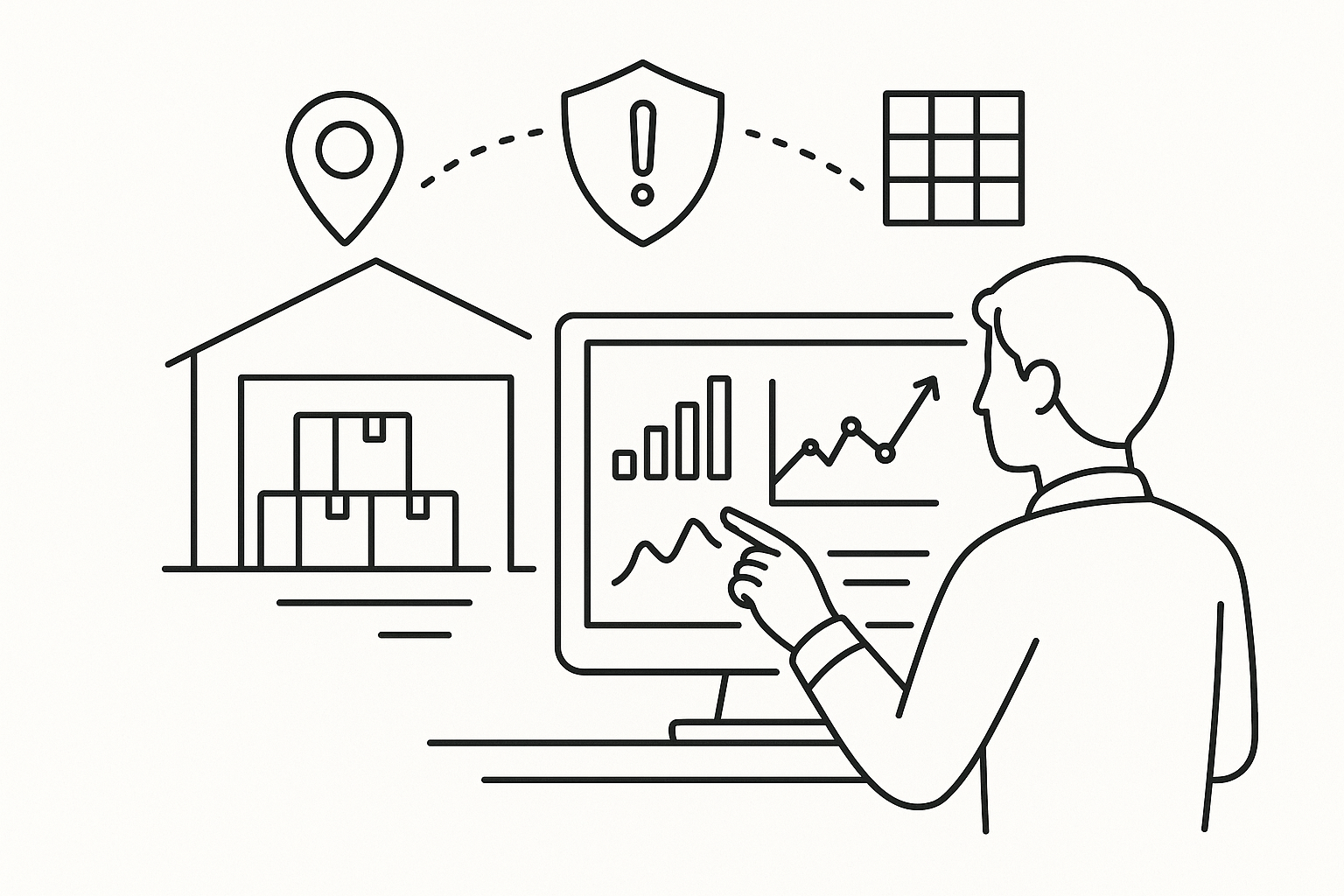Forecast Risk and Open Orders: Predicting Borrower Performance
Series: Unlocking Real-Time Risk Visibility in Consumer Products (Part 3 of 3)

In the first two articles of this series, we explored how inventory age and Potentially Distressed Inventory provide lenders, private equity firms, and consumer product executives with a sharper view of collateral and operational health. Those metrics show what’s happening inside the warehouse.
But what about the future? How do you know whether a company is on track to meet its sales and margin commitments? That’s where Forecast Risk and Open Orders come in.
Forecast Risk: Measuring Reality Against Expectations
Every consumer products company builds a forecast for the year — usually in terms of both sales dollars and initial markup (IMU%). But forecasts are only useful if they’re measured against real performance.
At CoMetrics, we track:
- Year-to-date sales vs. forecast sales – Are revenues keeping pace with the plan?
- Year-to-date IMU% vs. forecast IMU% – Are margins holding, or are they eroding compared to expectations?
Together, these measures flag companies that may miss top-line or profitability targets well before year-end.
Open Orders: A Forward-Looking Signal
Open orders provide another critical lens:
- Current open orders (units and gross profit) scheduled to be fulfilled this year.
- Same time last year comparison – Is the order book stronger or weaker than it was a year ago?
- Forecast context – The forecast serves as a backdrop. Early in the year, no one expects open orders to equal the remaining forecast, but later in the year — especially in the last two or three months — this comparison becomes more meaningful.
Open orders don’t predict the future alone, but when set against historical trends and forecast context, they become a powerful indicator of momentum.
Why It Matters
- For lenders: Forecast Risk and Open Orders highlight whether a borrower is aligned with expectations and whether order momentum supports repayment capacity. This forward-looking view is far more powerful than static financial statements.
- For private equity: These metrics quickly reveal whether portfolio companies are tracking to plan. Gaps can be addressed early, protecting value before earnings slip.
- For consumer products companies: Operators use these measures daily. CEOs, CFOs, and COOs often receive automated reports pushed directly to their inboxes, tracking YTD sales versus forecast alongside open orders. That visibility allows them to make rapid adjustments to production, pricing, or promotional strategies.
Delivered by DataMetrics
What makes this approach different is how it’s delivered. With DataMetrics technology, Forecast Risk and Open Orders aren’t captured once at year-end.They’re monitored on an ongoing cadence:
- Daily or multiple times per day for consumer product operators, often delivered directly to decision-makers via email.
- Monthly or quarterly for lenders, aligned to their credit review cycles.
This ensures stakeholders aren’t making decisions based on stale or outdated projections. Instead, they’re working from timely, unobtrusive updates that reflect the latest reality.
Final Word
Taken together — Inventory Age, Potentially Distressed Inventory, and Forecast Risk & Open Orders — provide a holistic framework for evaluating borrower health, portfolio performance, and operational discipline.
With CoMetrics defining the methodology and DataMetrics delivering it continuously, lenders, investors, and operators gain a level of visibility that transforms risk management from reactive to proactive.